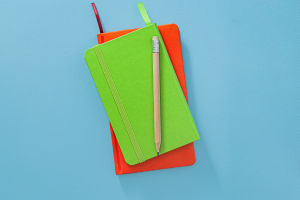Whether the tip of a pencil is poisonous is a common misconception.
Many people believe that the inside of a pencil is made of "lead," and therefore worry about poisoning if they accidentally bite the pencil tip or use it frequently.
However, the truth is that modern pencils do not contain any lead element. Instead, they are made of a material called graphite, which is a natural mineral form of pure carbon. Graphite has no toxicity and does not pose any harm to the human body during use.
The history of pencils dates back hundreds of years, and early writing tools were indeed made of lead because lead is soft and leaves a mark on paper. However, over time, researchers discovered that graphite was a much better substitute.
Graphite provides a clearer writing effect and does not have lead toxicity. Since the 18th century, the core of pencils has been replaced by a mixture of graphite and clay. Although we still call them "lead pencils," they no longer contain any lead.
The graphite in pencils is harmless; even if it accidentally punctures the skin during writing or if a small amount is ingested, it will not cause poisoning. Since graphite is entirely different from lead, its effect on the human body is also entirely different.
Graphite is widely used in everyday life, not only in pencil cores but also in lubricants, electrodes, and other fields. This further proves the safety and stability of graphite.
So why do people think pencils are poisonous? This might come from the literal association with "lead," which misleads some to believe that pencils are related to the metal lead.
Lead itself is a toxic heavy metal; prolonged exposure can lead to lead poisoning and negatively impact the nervous system, kidneys, and other organs.
Therefore, people naturally worry, mistakenly believing that pencils contain this metal and could be harmful. However, the graphite used in pencils and lead are entirely different substances and do not share the same toxic risk.
Additionally, pencil manufacturers strictly control the safety of pencil ingredients during production. Modern pencils are not simply a mix of graphite and clay; they also use glue, varnish, and other materials to ensure durability and strength.
These components undergo safety testing and meet strict standards. As a result, pencils, as essential tools for learning and work, are made with ingredients that are carefully tested to ensure they do not have any harmful effects on the human body.
However, the surface coating on some pencils may use paints containing lead, which occasionally appears in lower-quality pencils. Brightly colored coatings, in particular, could contain trace amounts of heavy metals.
It's best to choose pencils from reputable brands that have passed quality inspections. Additionally, it is not recommended for children to chew on pencils. Although graphite and clay are non-toxic, the coating material may contain minor chemical ingredients. Being cautious can better safeguard health.
The pencil tip itself is non-toxic, and the main components of modern pencils—graphite and clay—pose no harm to the human body. There is no need to worry about poisoning from handling pencils during writing and learning.
This misconception arises mostly from misleading terminology rather than scientific facts. When buying pencils, it is best to choose safe and reliable brands to avoid any unnecessary chemical exposure, allowing for worry-free use in writing and drawing.


